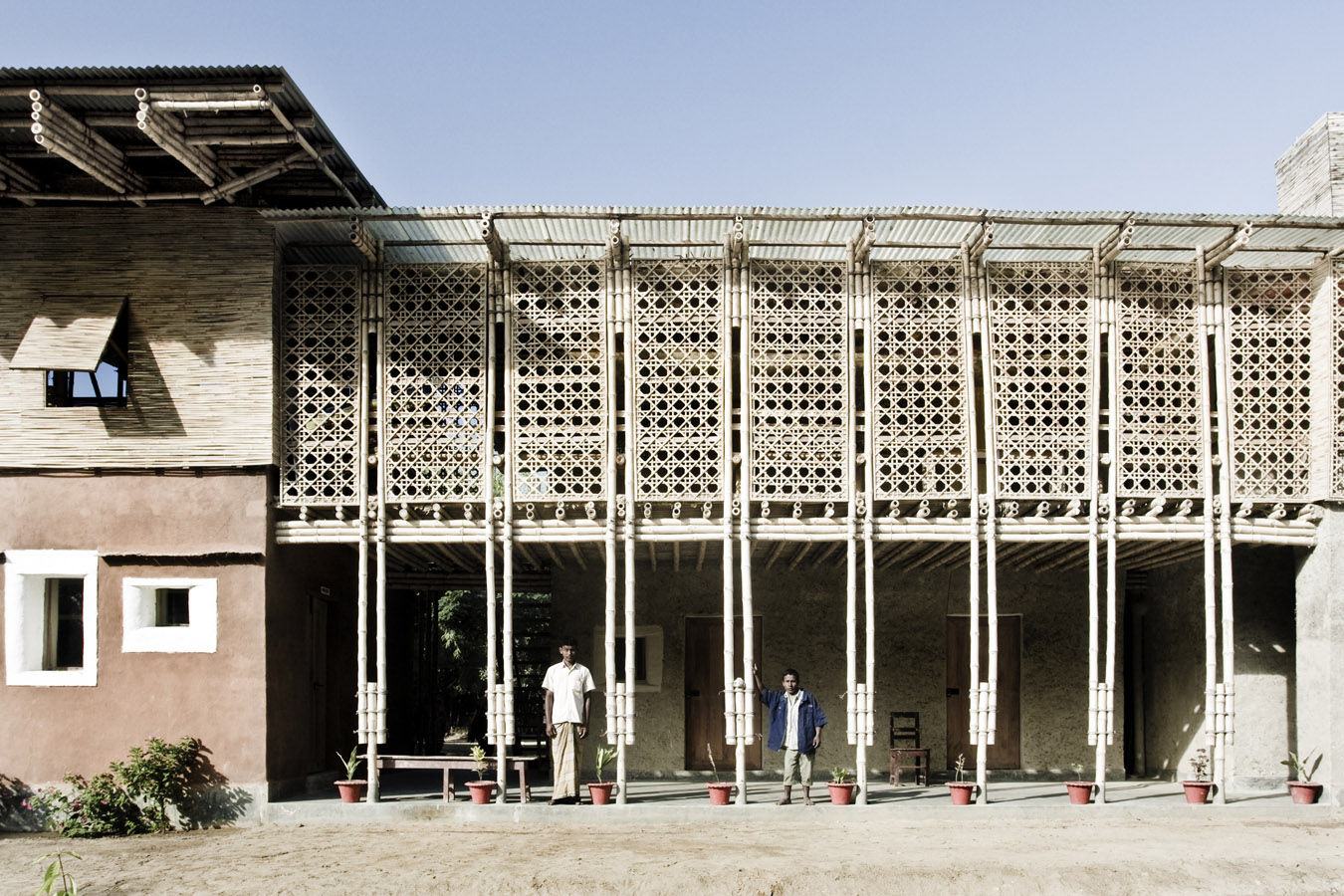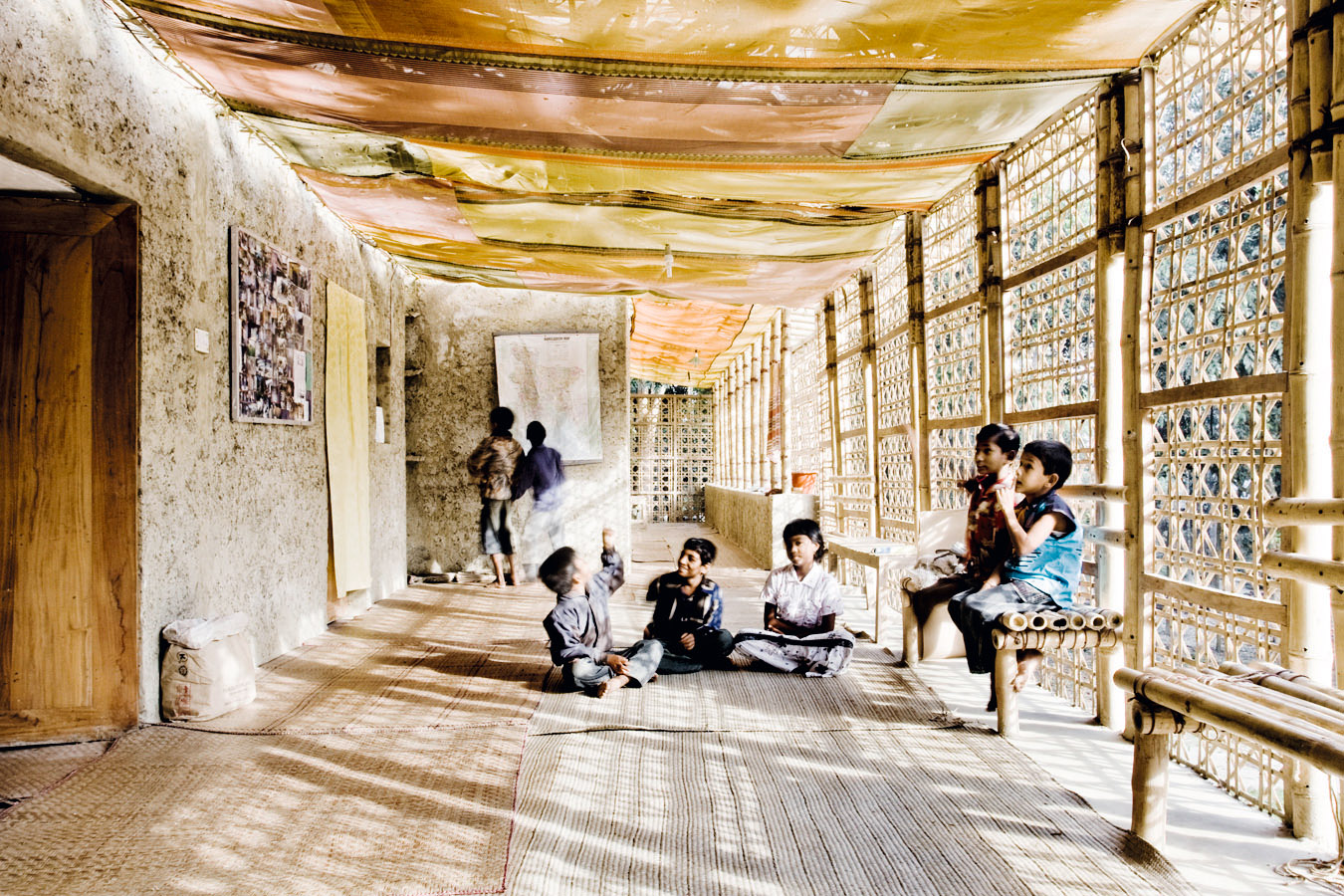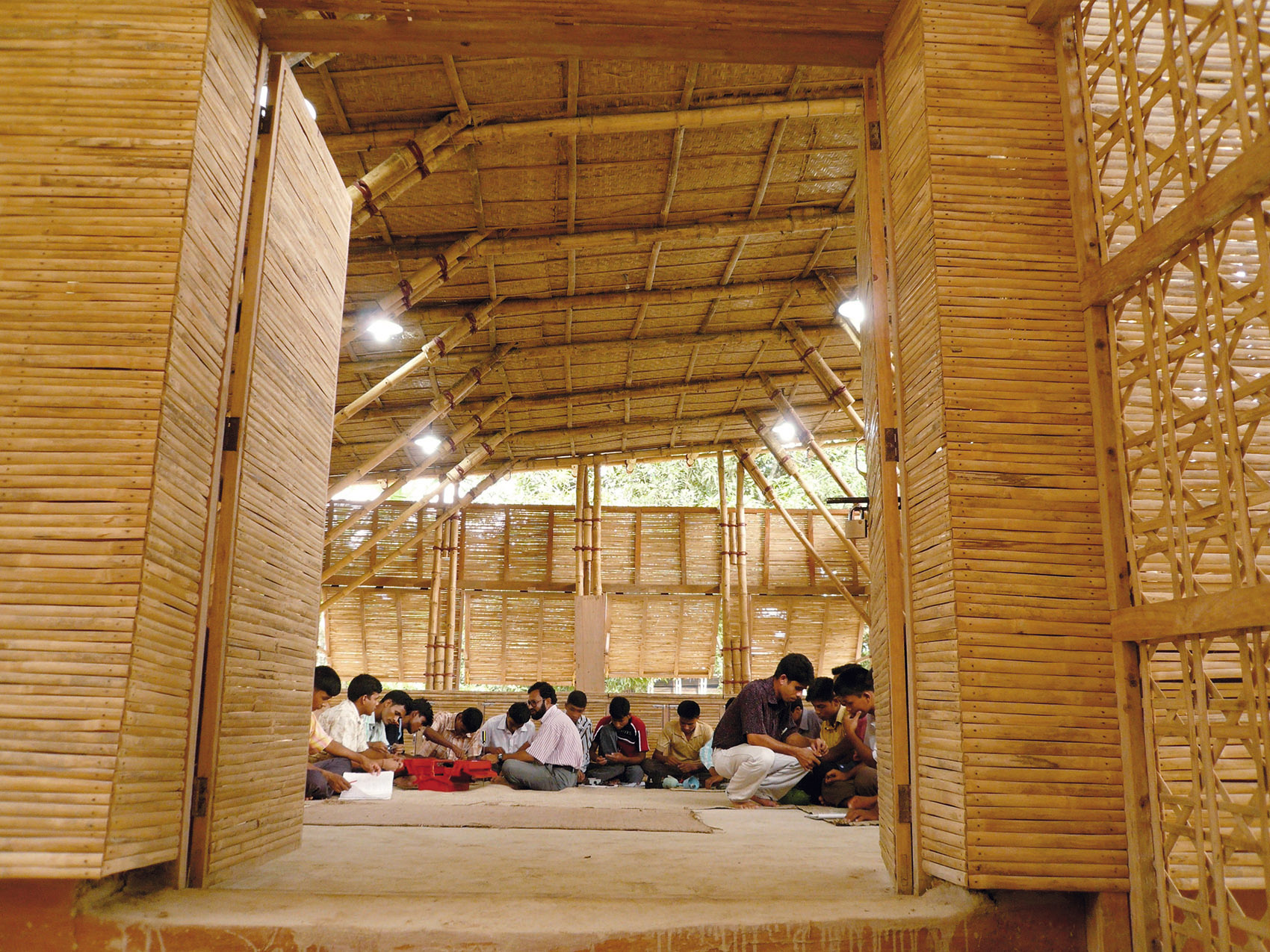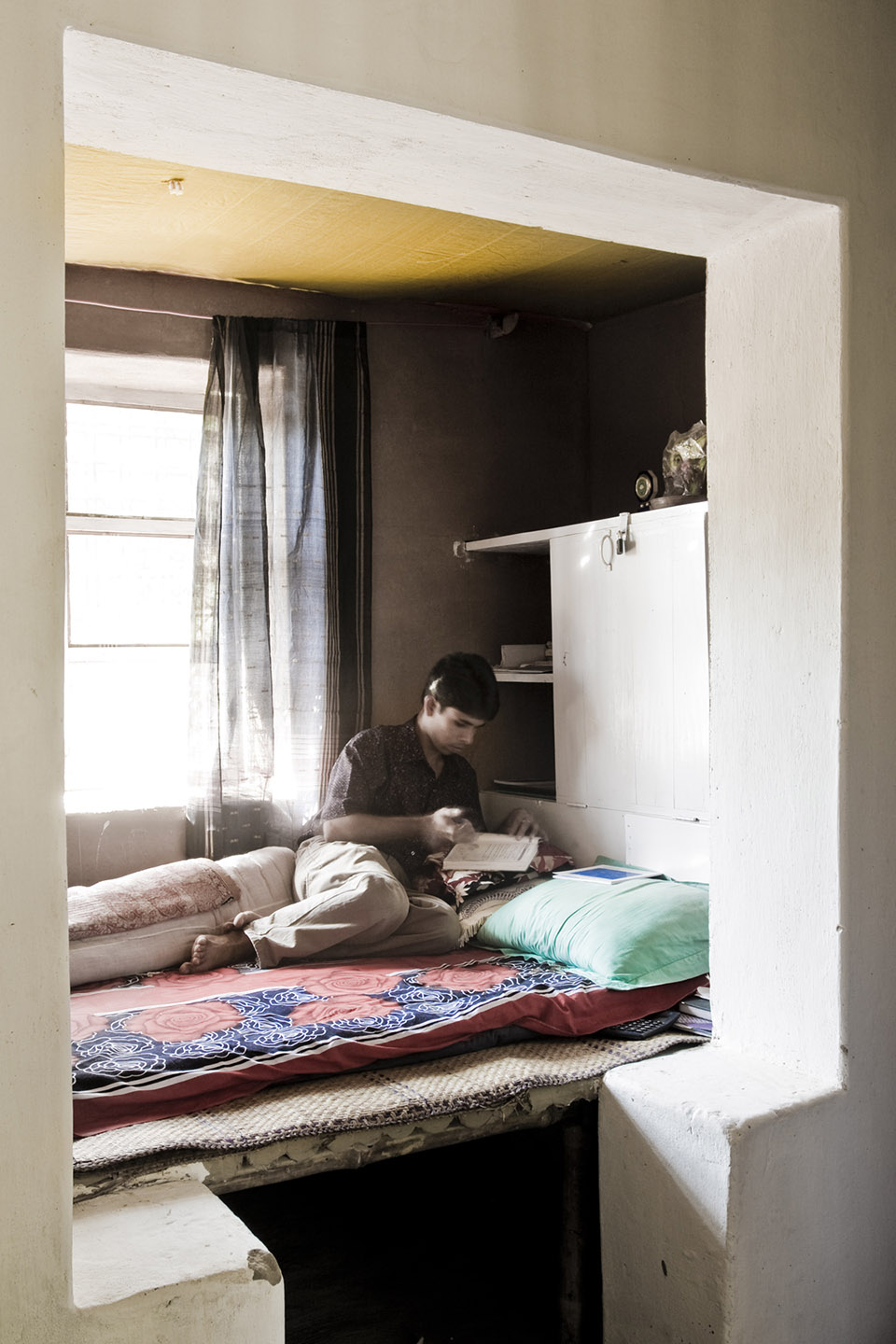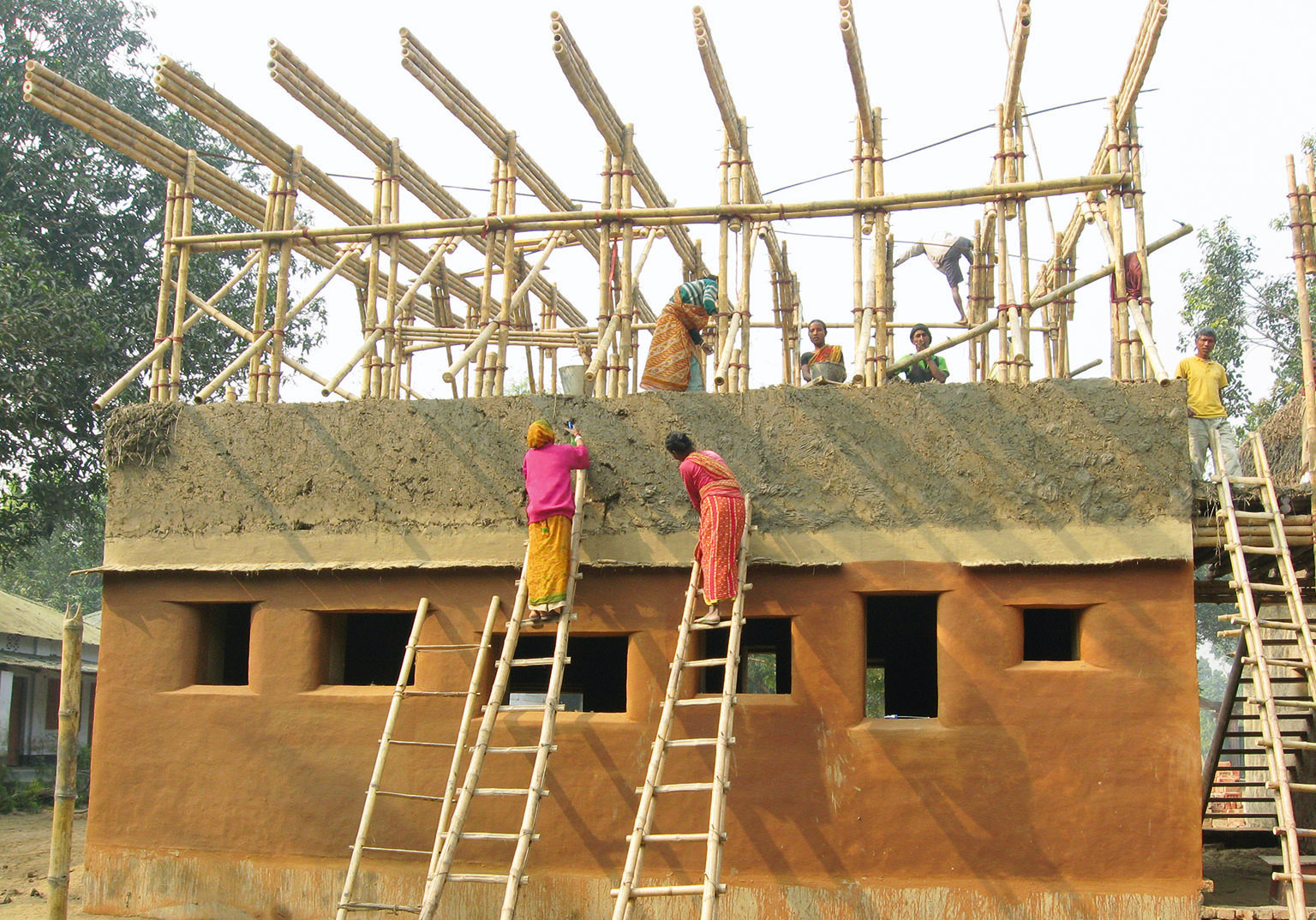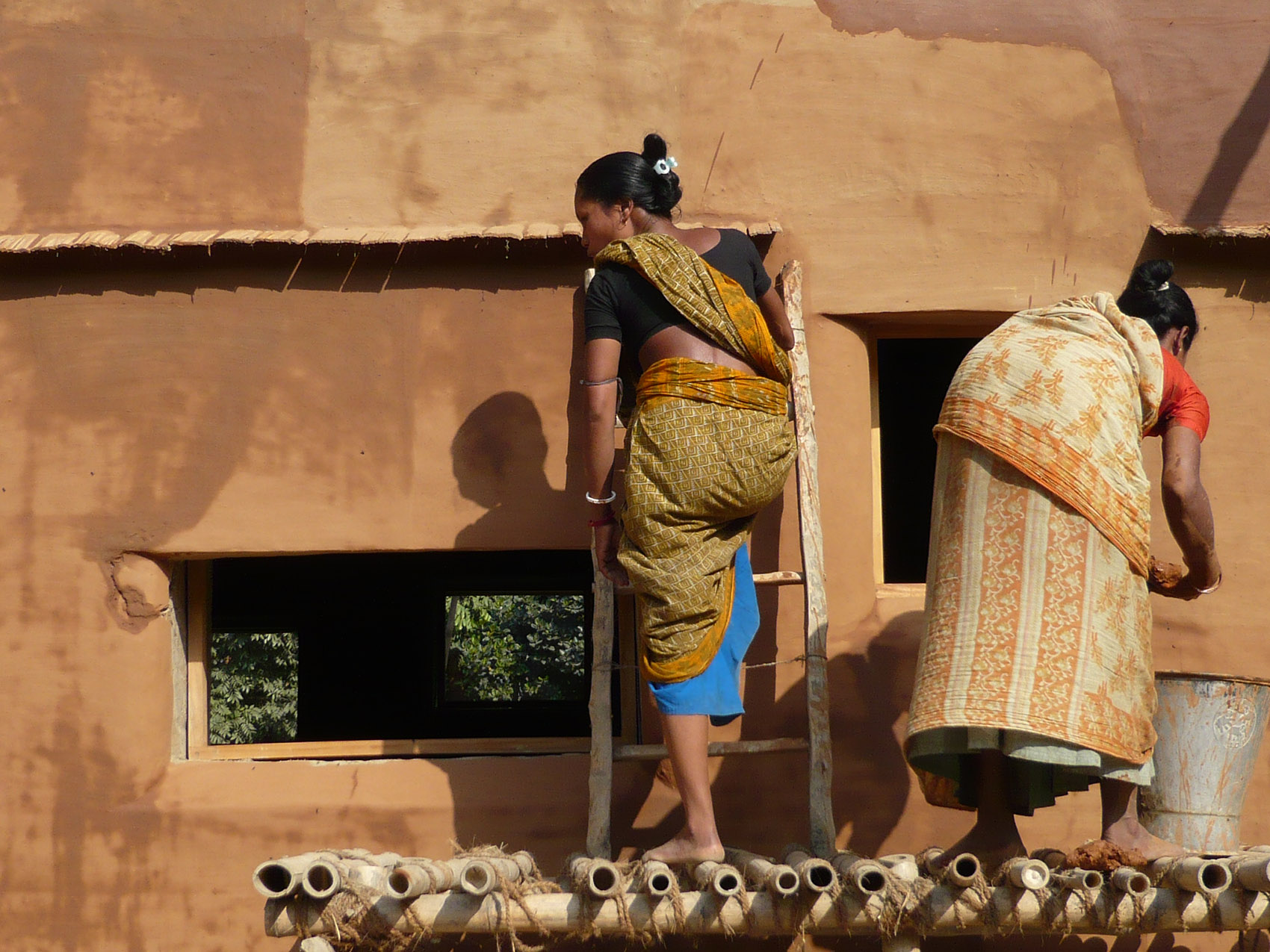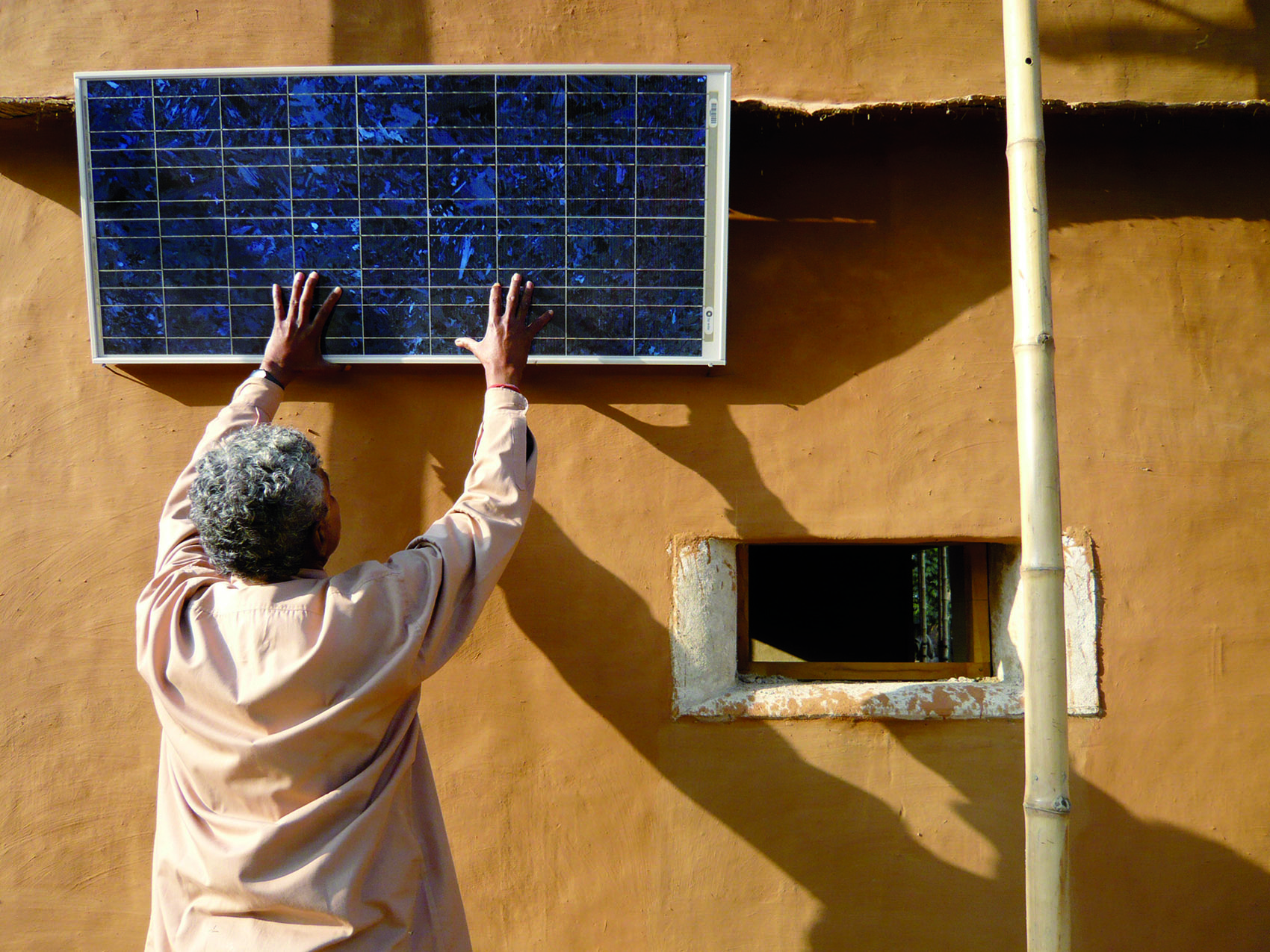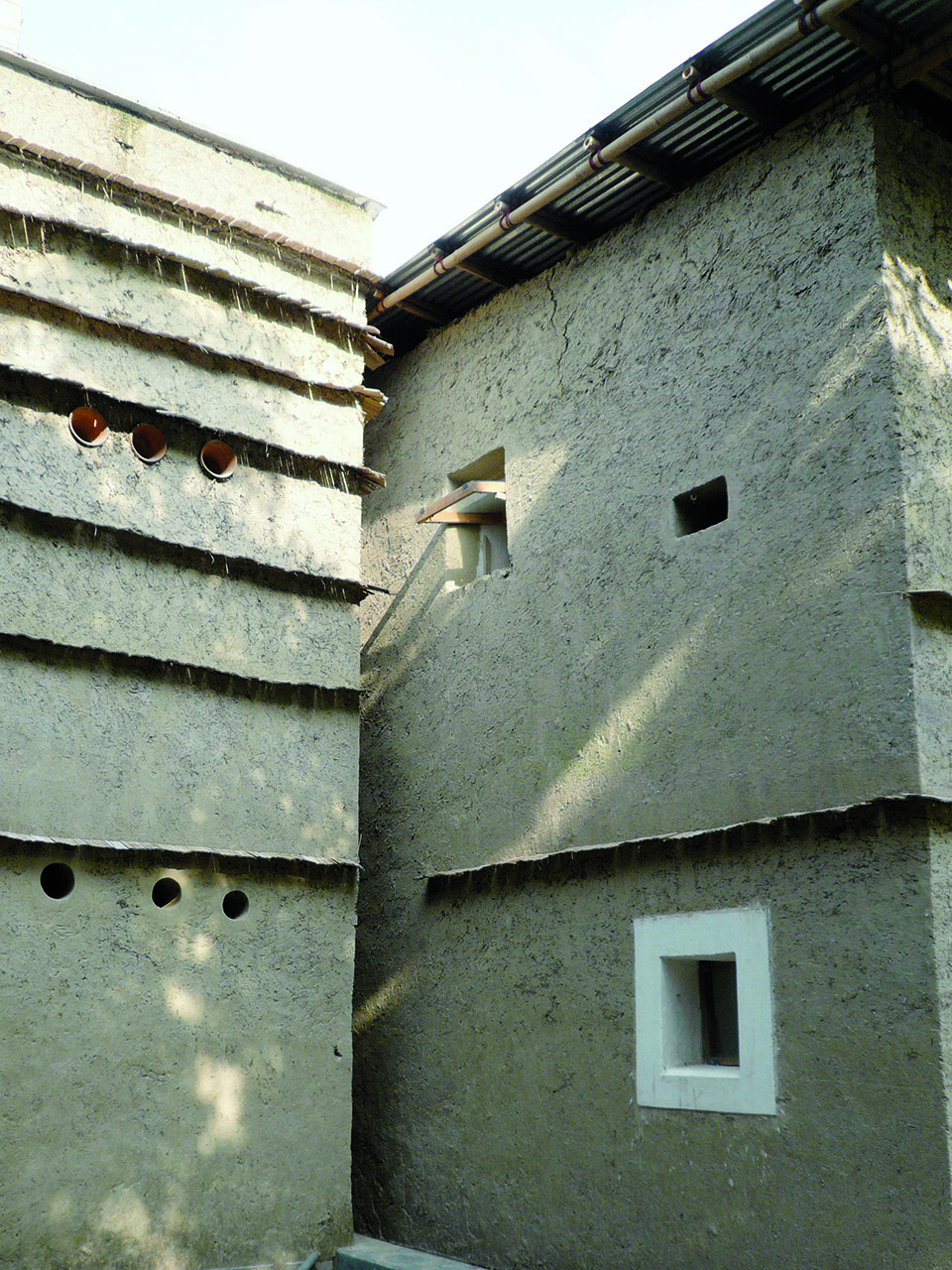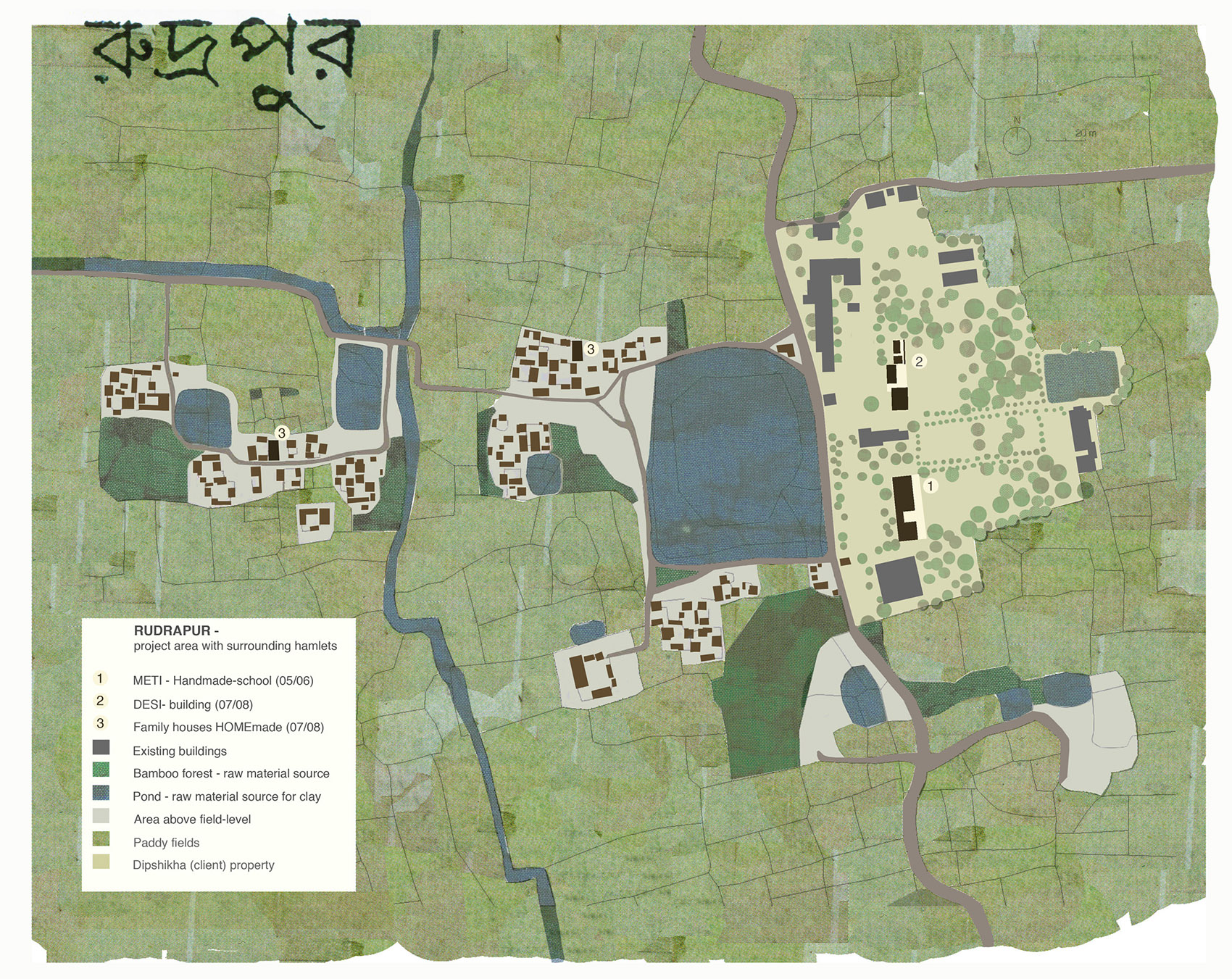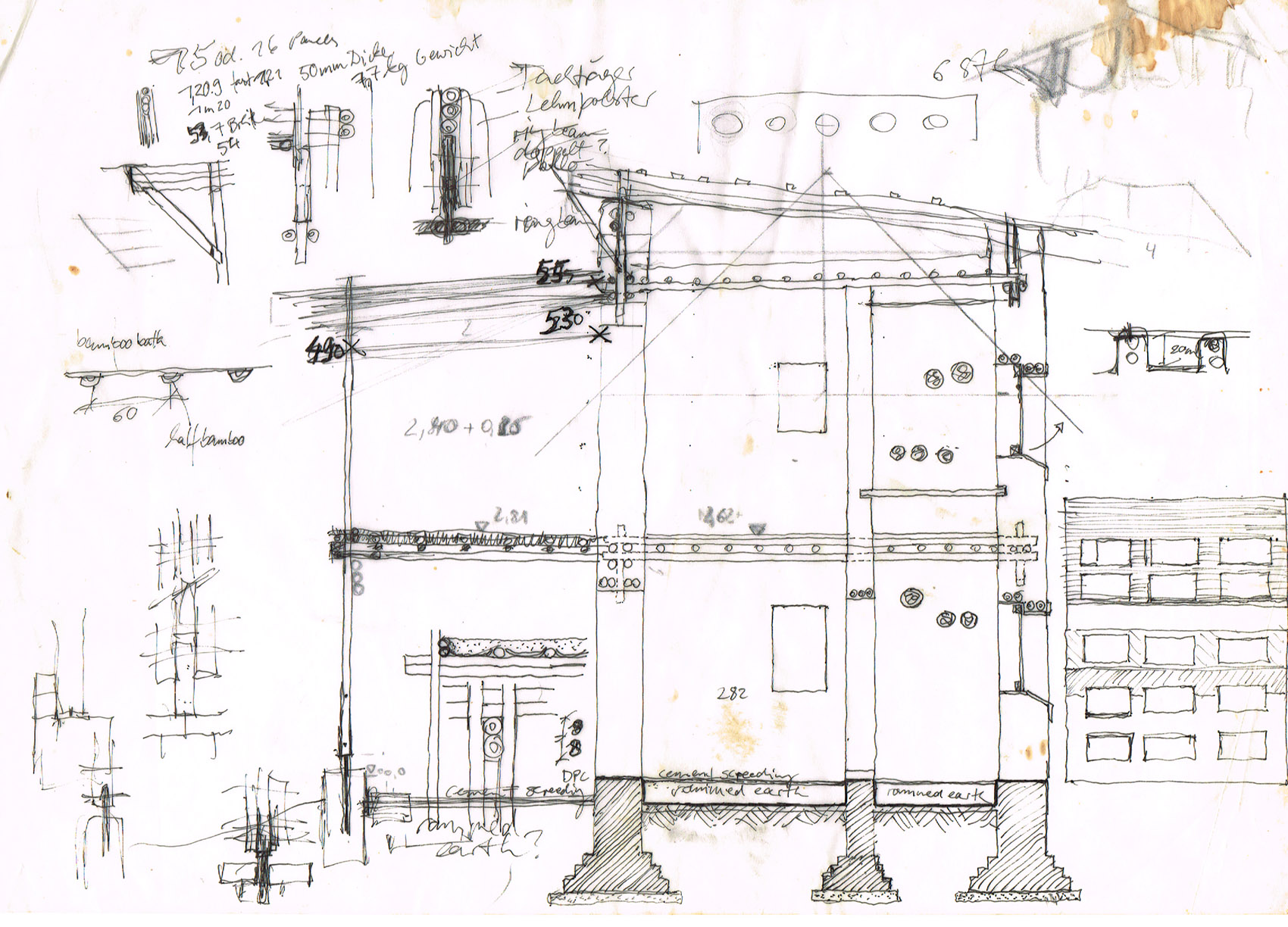贫穷家庭的生活状态一般都是可持续的,这种现象在发展中国家尤其明显。从低收入到中产阶级家庭,这种状态发生了显著变化,自给自足的生活方式被消费主义取代。越来越多的本地人被不同寻常的外来事物吸引,他们对西方的生活方式充满憧憬,逐渐忘却了已经形成的传统。几乎所有的中产阶级都是在复制别人的生活方式,鲜有寻求与区域文化的融合。比起利用手头资源创造最大的利益,对外来物品的进口和消费在商业中占据了更加重要的地位,导致经济力量向境外市场流失。对于建筑和建造行业来说,这种变化带来的影响主要体现在建造材料的改变上。砖和水泥取代了厚重的土墙,室内环境则通过空调来调节。
面对这一特殊的挑战,DESI项目做出了自己的回应。它将为孟加拉国的乡村地区创造一种新的生活模型,提升中产阶级——在这个项目中是教师——的生活质量的同时,保留传统建筑中的可持续性特质。对优秀工艺、功能规划和设计的关注让建筑变得与众不同,金钱在这里起到的作用微乎其微。这是一座公平的建筑,将社会地位和财务能力置之度外,以传统建造方式的技术发展为核心动力,而不是为昂贵的进口材料打广告。立面复杂起伏的竹墙为项目带来了区别于水泥砖墙的独特魅力,自然而然地形成了一种独立的、属于当地的文化认同。
▼项目外观,external view of the proejct ©Naquib Hossain
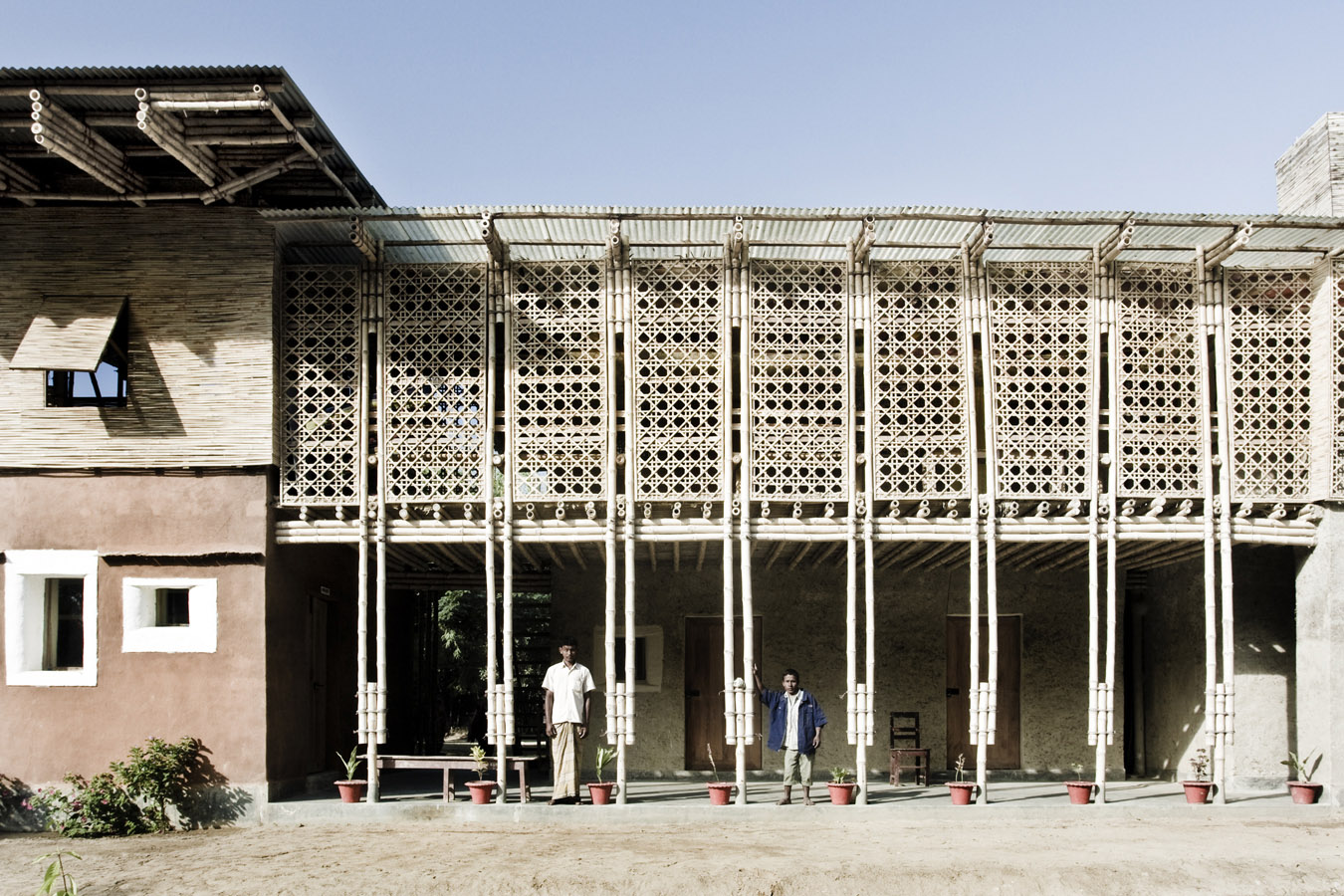
In general the living conditions of poor families, especially in developing countries are traditionally sustainable. It’s the step from low-income status to middle-class that is often causing a major shift in direction. With higher income values and living styles begin to change – from own production and self-sufficiency towards consumption. The uncommon, special and exotic is attracting more than the locally existing, the energizing dream and orientation is the western life-style, not the grown tradition. The middle-class is mostly copying, trials to find own ways appropriate to the culture and the regional life-style are rare. Instead of the well-proven business model – to make the best out of existing resources – the import and consumption of external goods is gaining more importance. As a result the economic power flows into external markets. For architecture and the building sector this trend is reflected most of all in the changing usage of building materials. Instead of continuing building with earth, bricks and cement is bought and instead of thick earthen walls the indoor-climate is regulated by air condition.
The DESI building reacts on this particular challenge – it is a model for a new and appropriate way of living in the rural areas of Bangladesh: an improved living standard (for the middle class – in this case teachers) that keeps the traditional level of sustainability. It is not the money that makes the main difference, but the care for a good craftsmanship, planning and design. It’s a fair architecture that – irrespective of the social and financial status – motivates to a technical development of traditional building methods, instead of advertising the consumption of expensive and imported materials. In place of a cement-plastered brick wall, a sophistic woven bamboo wall becomes a sign of prestige. In that way an independent, local identity evolves quite automatically…
▼区位分析,项目位于孟加拉乡村,location analysis, the project was located in the rural area of Bangladesh ©Anna Heringer
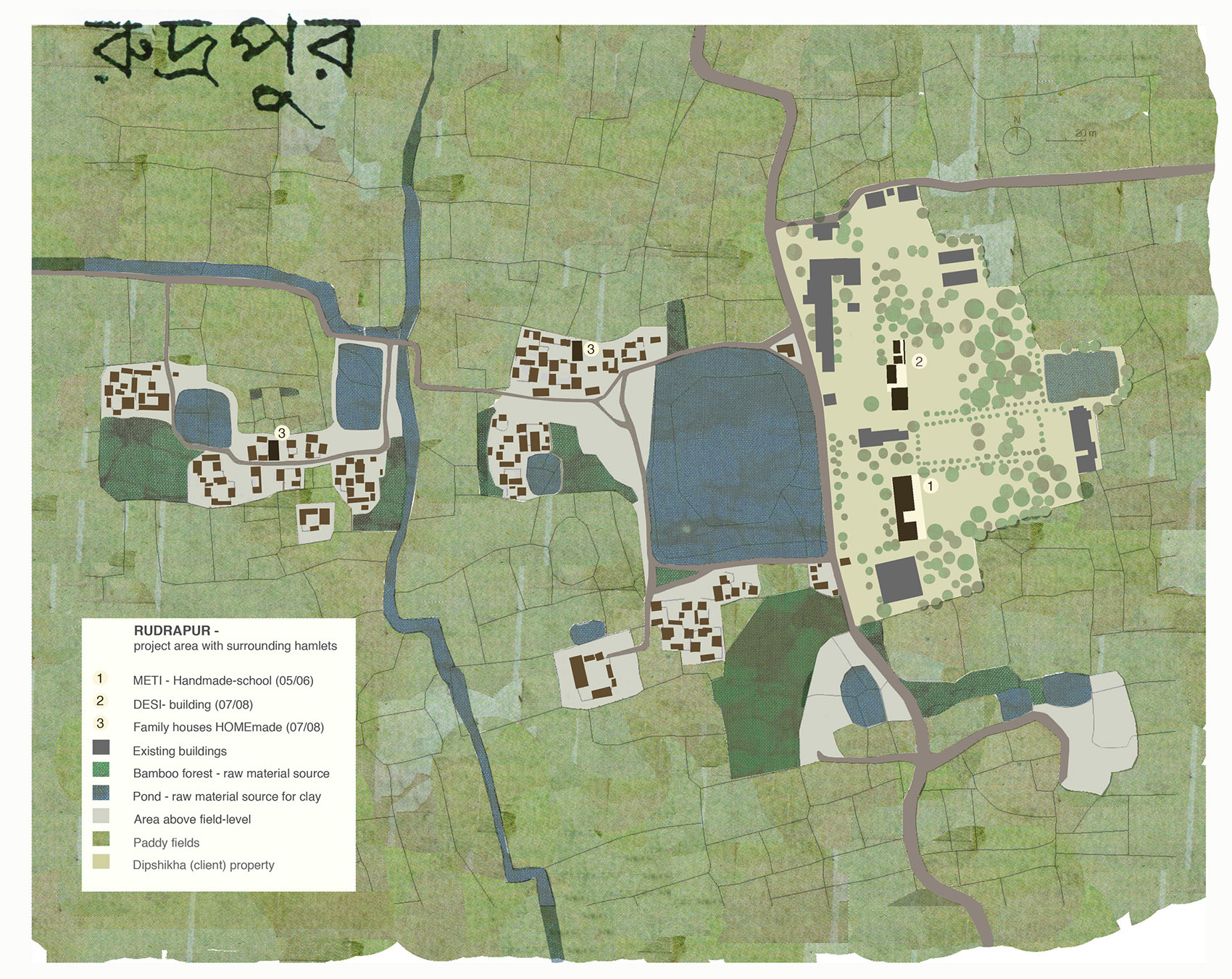
▼项目采用传统的建造方式,traditional building methods used in the proejct ©Naquib Hossain / B.K.S. Inan


DESI项目是对传统孟加拉房屋的现代转译。在孟加拉乡村,吃放、睡觉、洗漱等不同功能的房间相互独立,围绕中央庭院建造。与之相对,在这个项目中,建筑师尝试将工作和生活的所有功能整合到一栋建筑中,创造一种与农业无关却依然可以融入乡村文化脉络的生活方式。建筑是一所培养电工的职业学校,包含两间教室,两间办公室,以及两间教师居所。一间配有两个淋浴间和两个厕所的独立浴室供教师使用,另在一层设置了厕所和盥洗池以满足学生的需求。
The DESI building is a new interpretation of the traditional Bangladeshi homestead. Typically in rural Bangladesh all of the various household functions – eating, sleeping, washing, etc. – are performed in separate structures that are built around a central courtyard. The DESI building, however, attempts to incorporate all of the functions of working and living into a single structure. The design is geared toward a lifestyle that is no longer linked with agriculture, but still linked to the rural context and culture. DESI (Dipshikha Electrical Skill Improvement) is a vocational school for electrical training. The DESI building houses two classrooms, two offices, and two residences for the school instructors. There is a separate bathroom with two showers and two toilets for the teachers and a bathroom facility with toilets and sinks on the ground floor for the students.
▼项目平面和立面,不同功能整合在一栋建筑中,plan and elevation of the project, different functions incorporated in one structure ©Anna Heringer
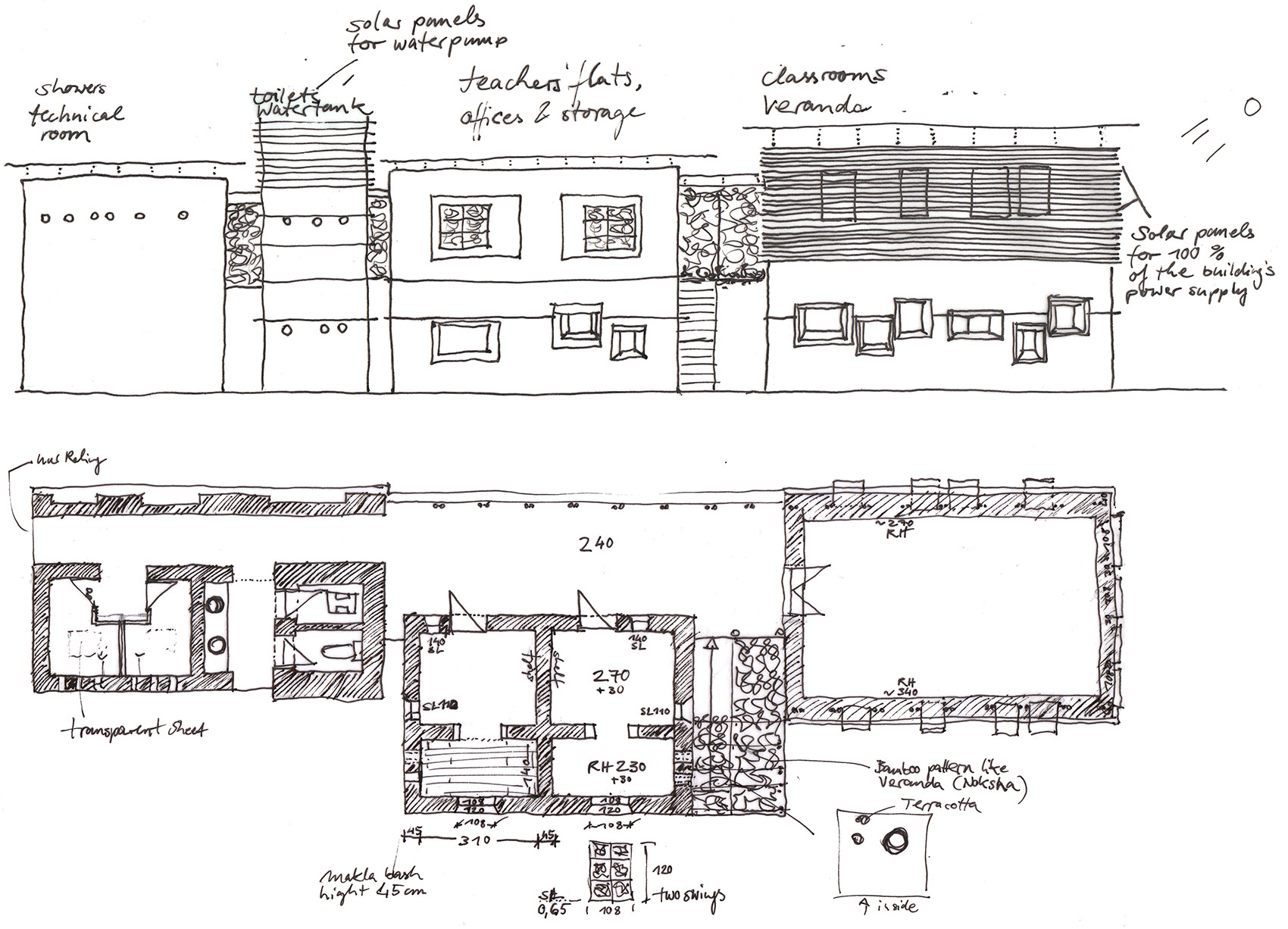
建筑需要的所有能源均来自太阳能板。设计利用太阳能将水从井里汲取到水箱中,再通过太阳能系统加热。厕所设有两个隔间式的化粪池,这种卫生单元第一次在孟加拉的土制建筑中出现,证明了泥土和竹子材料具有足够的灵活性,可以满足现代生活方式的需求。
Solar panels produce 100% of the building’s energy needs. A solar thermal heating system provides warm water. Solar panels also directly power a motor which pumps water from a well into the water tank. The toilets have their own two chamber septic tank. This is the first time that sanitary units have been built into earth houses in Bangladesh, proving that mud and bamboo are flexible enough to accommodate modern lifestyle requirements.
▼安装太阳板,为项目提供能源,installation of polar panels providing energy to the project ©Naquib Hossain / B.K.S. Inan
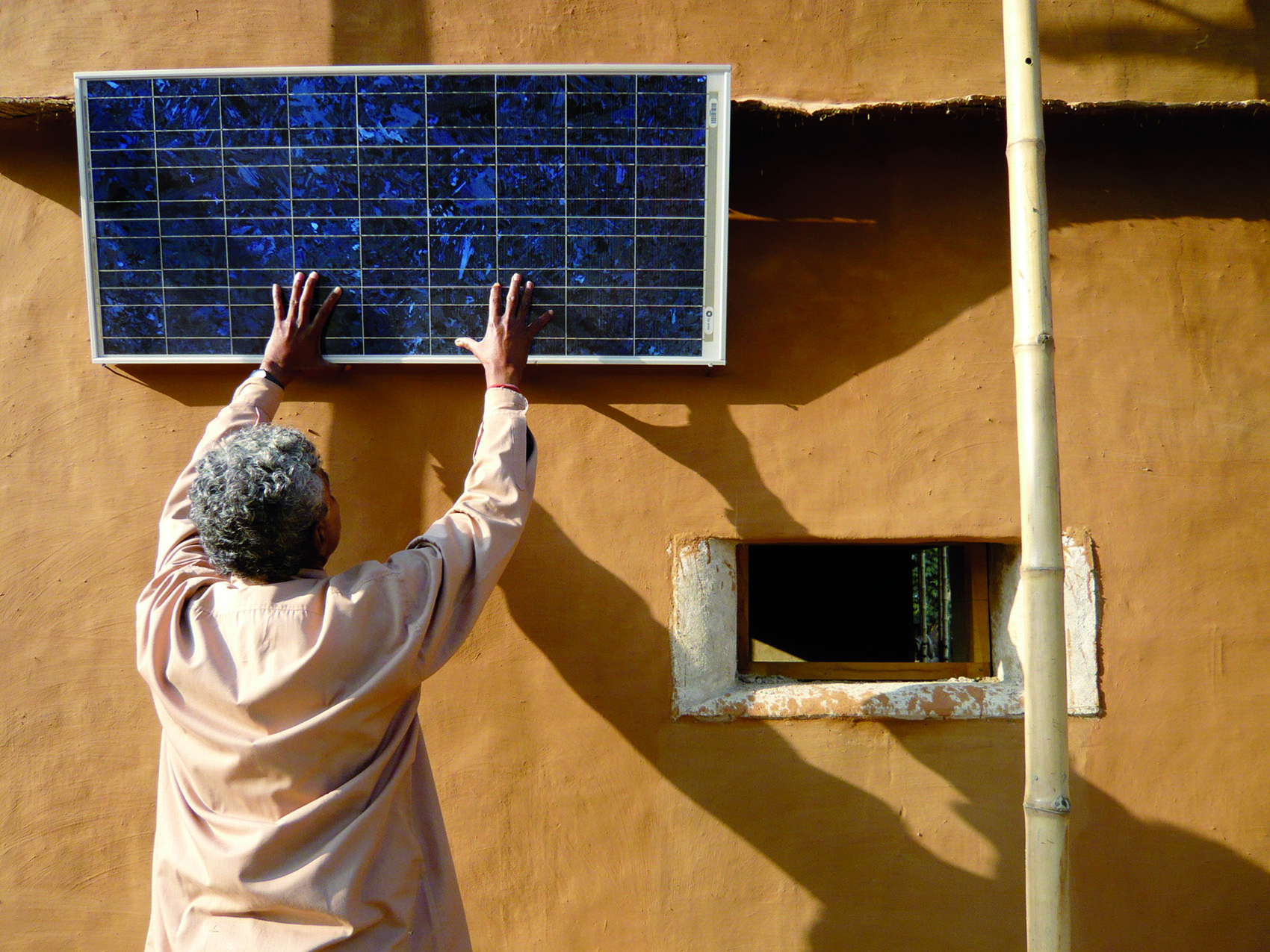
项目在高技和低技之间形成了平衡。建筑采用了十分基础的建造手段,配以现代的新能源系统。前者让空间有着较高的被动式保温性能,并且优化了自然采光和通风,使得只要使用相对小型的太阳板和电池系统就可以满足建筑全部的能源需求。
The building is an appropriate balance of high tech and low tech – very basic building methods are combined with modern, alternative energy power systems. Because the building is passively heated and cooled and optimizes natural light and ventilation, the relatively small solar panel and battery system provides all of the power the building requires.
▼半室外空间,竹墙保证通风和采光,semi-outdoor space, bamboo wall ensuring natural light and ventilation ©Naquib Hossain

▼室内公共空间,竹子和土墙形成良好的遮阳、采光和通风效果,interior public space, mud and bamboo optimizing the shading, natural light and ventilation ©Naquib Hossain

▼教室,classroom ©B.K.S. Inan
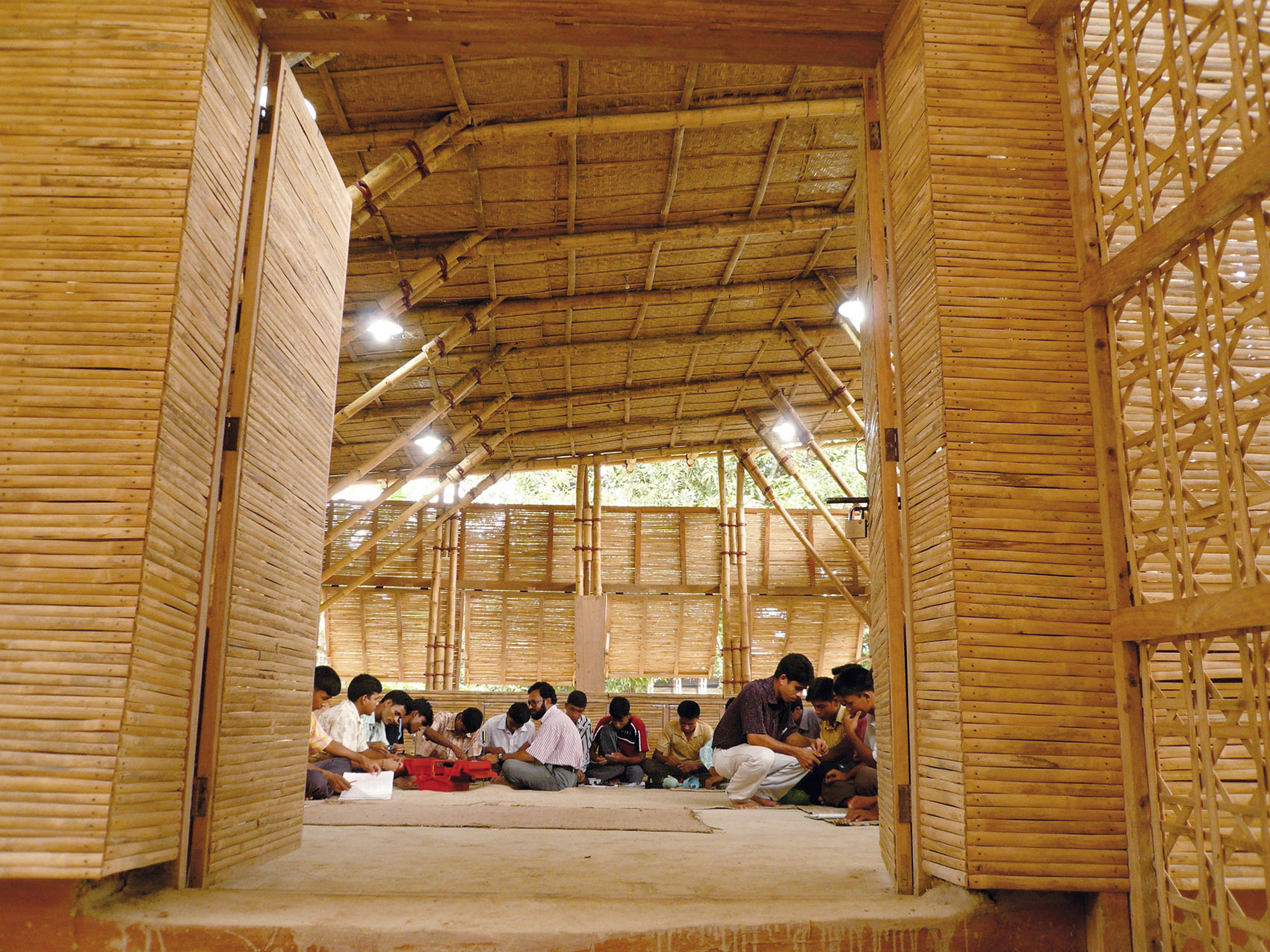
▼教师房间,living space for the teacher ©Naquib Hossain
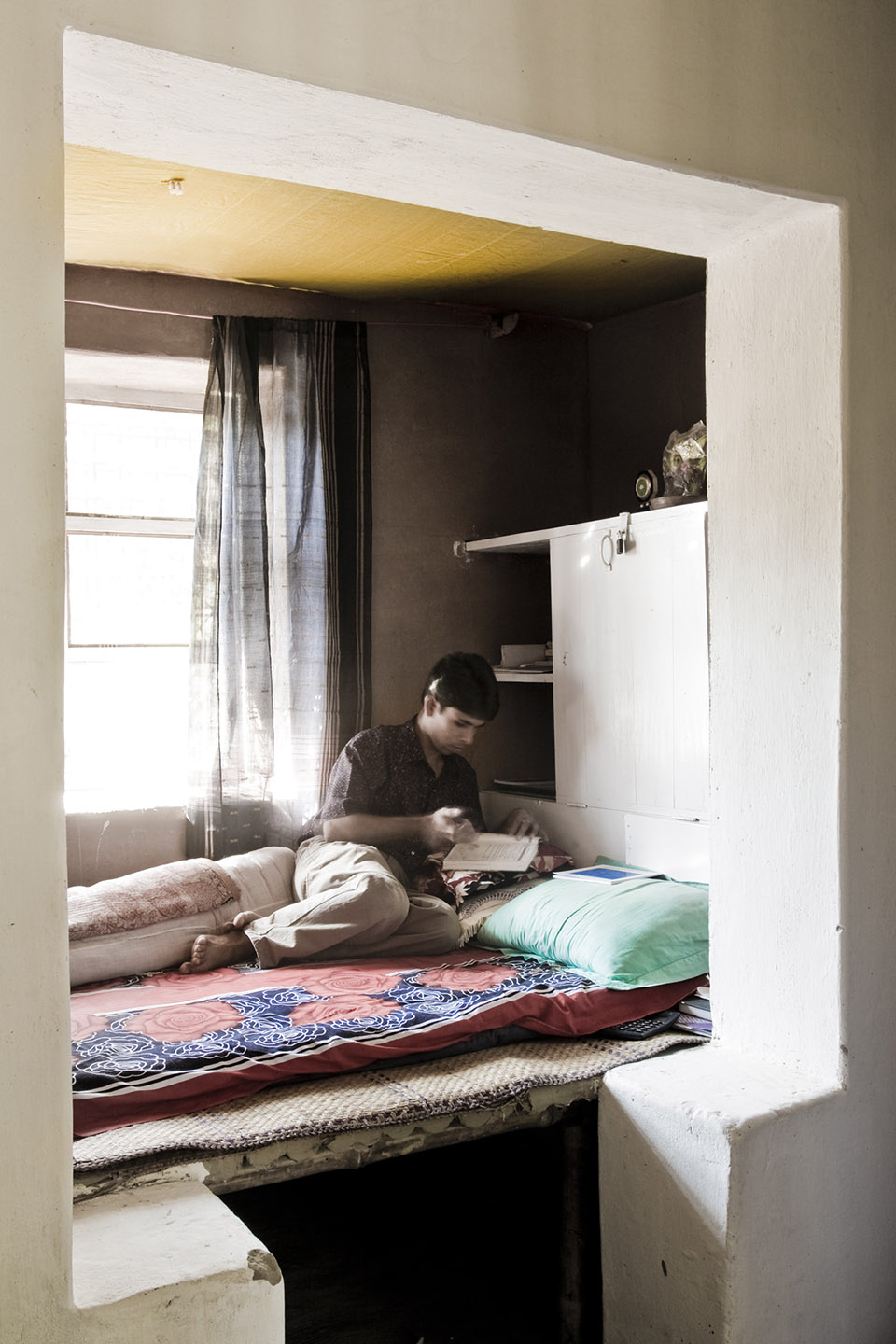
▼土墙细部,details of the earth wall ©B.K.S. Inan
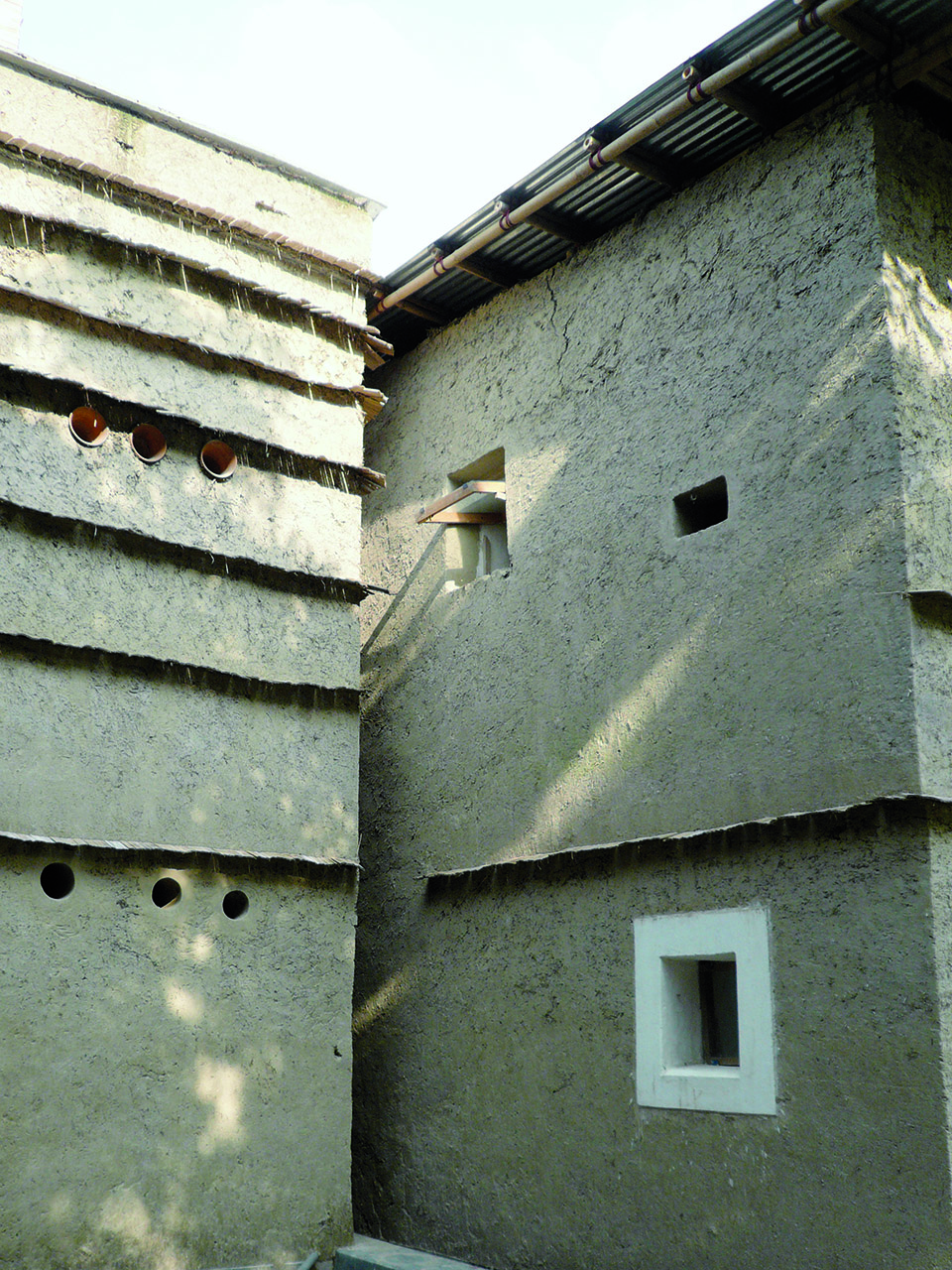
▼剖面草图,sketch of section ©Anna Heringer
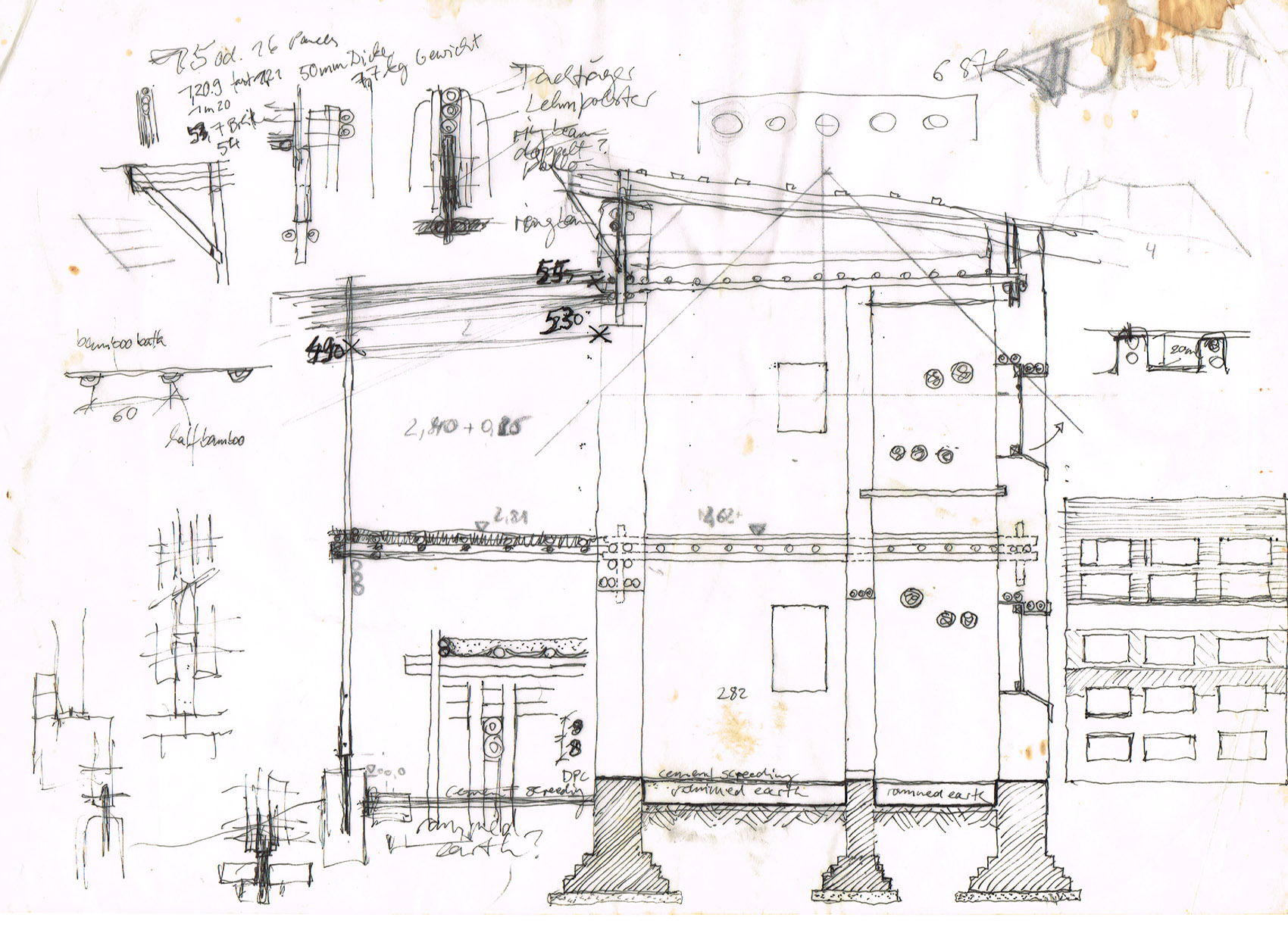
Funded by: Shanti-Partnerschaft Bangladesh e.V., Shanti Schweiz and Omicron Clients: Dipshikha (Non-formal Education Training and Research Society for Village Development), Bangladesh for DESI (Dipshikha Electrical Skill Improvement) Design: Anna Heringer Building: Two storey vocational school building (for electrical students) made with earth and bamboo Ground floor: 1 classroom plus veranda for practical training, 2 offices, sanitary units, technical room, storage First floor: 1 classroom, veranda, two teacher flats, sanitary units Floor area:300m2 Location: Rudrapur, Dinajpur district, Bangladesh Structural engineering and technical supervision: Stefan Neumann Solar installations and electrical concept: Jakob Schaub Energy concept:Oskar Pankratz Advisor in earthen structures: Martin Rauch Advisor in bamboo treatment and quality management: Prof. Walter Liese Supervision of site:Stefan Neumann, Montu Ram Saw, Shoeb Al Rahe Project management: Anna Heringer with Dipshikha Duration:September 2007 – April 2008 Construction workers and craftsmen were all coming from Rudrapur. This project is part of the Phd of Anna Heringer with kind support of The Elite Network Bavaria
